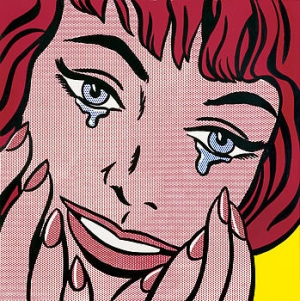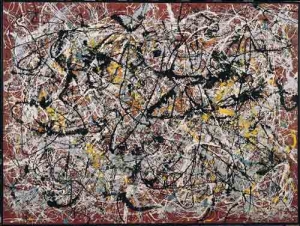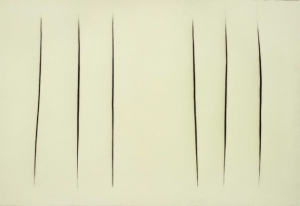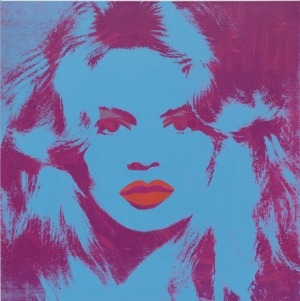|
Displaying items by tag: Andy Warhol

The Gagosian Gallery has announced that they will be participating in ArtRio for the first time this year. Held September 12-16, ArtRio features major works by current artists and other modern masters. Gagosian plans to not only have a booth at the fair, but will also hold a sculpture exhibition in an offsite warehouse. Both the booth and the warehouse will be designed by Brazilian designer Claudia Moreira Salles.
There has been some chatter about Gagosian expanding internationally and as Brazil's art market has expanded considerably in recent years, ArtRio seems a logical destination for Gagosian. Works by Damien Hirst, Cecily Brown, Alexander Calder, Jeff Koons, Roy Lichtenstein, Takashi Murakami, Pablo Picasso, Robert Rauschenberg, Richard Serra, Cy Twombly, Andy Warhol, and many others will be on view.
ArtRio will coincide with the first major retrospective of Alberto Giacometti in South America. The show will run through September 16th at the Museu de Arte de Moderne do Rio de Janeiro and brings together 280 works from the Fondation Alberto e Annette Giacometti in Paris, which is represented by the Gagosian Gallery.
When John Baldessari was looking for an L.A. gallery to show his work 20 years ago, he narrowed his choice to three and ultimately chose Margo Leavin.
"I thought she would be around for a long time," he said. "And it turned out to be true."
For more than four decades, Leavin has occupied a prominent perch in the Los Angeles contemporary art scene. Her gallery, which opened in 1970, is one of the most enduring and recognizable in the city, with a roster of top-tier artists that includes Jeffrey Vallance, Alexis Smith and William Leavitt as well as Baldessari.
When painter Philip Pearlstein moved to Manhattan in 1949, he and his college pal Andy Warhol subletted an dingy eighth-floor walk-up on St. Marks Place and Avenue A.
“The bathtub was in the kitchen and it was usually full of roaches, incredible roaches,” Mr. Pearlstein once said of the apartment. Nor did their lot improve when they relocated to a West 23rd Street loft a few months later.

At Progressive’s offices in Mayfield Village, Ohio, a walk down the stairs is a little more exciting than at most companies. The main stairwell is draped with candles, steel, wire, silk flowers and ribbons all dripped in wax. The installation, by artist Petah Coyne, gives the space the feel of a “haunted ballroom,” says Kristin Rogers, art education and communications manager for the Progressive Collection.
The auto insurance giant boasts one of the most extensive contemporary art collections in the corporate world, and it’s more than just decoration: the company says it uses the art to encourage its employees to think creatively.
Hundreds if not thousands of companies collect art—but only a few make an art of collecting.
Financial return is not the aim. “Art is a risky investment,” says Shirley Reiff Howarth, editor of the International Directory of Corporate Art, who points to the notion that there must be some financial payoff as one of the great myths that surround corporate art.
Some corporate collections are little more than furnishing, others are historical. The companies on our list of the top corporate art collections, however, fall under a third category of corporations that do more than just possess work. Nick Orchard, head of Corporate Collections at Christie’s Europe, calls this “proactive collecting.” UBS and Deutsche Bank, for example, have made art central to their corporate identities. Bank of America uses art to connect with the public.
To come up with our list of the best corporate art collections, we spoke to a range of writers, art advisers and curators. Their standard: the best collections use art to improve lives and to educate. In addition to expert interviews, we considered activity and buzz around the collection. This means owning fifty Picassos is not enough if they have been sitting in storage for a decade.
Some of the collections are managed by a staff of curators and others rely on outside advisers. Some are largely open the public and others are only accessible to employees. Collections that have been sold or donated to museums are not included and the corporation must currently maintain the collection to be considered for this list. None of the corporations we spoke with would disclose the value of their collection for this story.
One of the companies featured on our list is UBS, which owns 35,000 pieces of modern and contemporary art. The Swiss bank mainly acquires works by relatively unknown (aka less expensive) emerging and mid-career artists. UBS’ philosophy is “to be supporting living artists at integral stages of their career,” says Jacqueline Lewis, the bank’s curator for the Americas.
The bank has loaned or gifted some of its art to major museums like MOMA, but much of the collection is displayed in employee only areas. Works are rotated among UBS location every year or two. Lewis says she often gets frustrated calls from bank employees when a work they’ve grown attached to is moved.

What kind of pop artist “does battle at the border of life and death”? Yayoi Kusama (b. 1929), who so described her art-making in 1961, suggests a Japanese Andy Warhol in terms of sheer energy, protean endeavors and fixation with publicity. But Warhol would never have professed such high purpose.
Indeed, the Kusama revealed by the current Whitney retrospective defies any single label. Despite her friendships forged in the ’60s with Warhol, Donald Judd, Claes Oldenburg and Joseph Cornell, her work leapfrogs categories like pop, minimalism and conceptual, revealing an honest vulnerability seldom seen in her male colleagues.
The museum’s front windows, crammed with the giant, bobbing spheres of her “Dots Obsession” (2009/2012), offer an instant dose of her signature polka-dotted installations. It’s only a foretaste, though, of the six decades of painting, sculpture, collage, film, performances, installations, fashion design and writing displayed or documented on the fourth floor.
Kusama’s “Infinity Net” paintings, her early nod to abstract expressionism, fill one gallery with countless swirls of white, subtly tightening and expanding across wide surfaces. She shifted gears with the “Accumulation” sculptures that appeared in some of the first exhibitions of pop art. These monochromatic works encrust various items—chairs, shoes, rowboat, ladder, hat, suitcase—with multitudes of stuffed fabric phalluses. The fidgety, potato-like protuberances have an awkward intimacy very foreign to pop and minimalism. A variation of these “Sex Obsession” sculptures, dubbed by Kusama the “Food Obsession” works, covers objects with macaroni.
Also on view is Kusama’s Self-Obliteration, her 1967 film showing her fiercely applying polka dots to animals and naked, carousing humans. But it took her “Anatomic Explosions” to put the self-styled “Priestess of Nudity” on the front pages. For these public performances, the artist hastily painted spots on nude dancers until the police showed up. The press releases and flyers combine ’60s breeziness with equal dollops of hucksterism and galactic purpose: “Become one with eternity. Obliterate your personality…take along one of our live bikini models.”
On a more poetic level, colorful mixed-media works on paper from the 1970s combine images of faces, insects and flowers with surprising delicacy. By this point, though, museum visitors may be wondering: How long can a soul publicly obsess about its own obsessions? Only so long, it seems; having returned to Japan, Kusama voluntarily entered a mental hospital in 1977, where she resides to this day.
Thankfully, it has been a nourishing environment. The vaguely biological forms of her large canvases and soft sculptures from the ’80s and ’90s glow with asexual sensuousness. Though frankly decorative, the seething, micro-dotted tentacles of “Yellow Trees” (1994) mesmerize. On the first floor, standing in for the enclosed installations produced since the ’90s is “Fireflies on the Water” (2002), from the Whitney’s own collection. Its coolness factor—with lights seeming to shimmer infinitely in all directions—-is not to be missed.
Pacing the exhibition are numerous photographs of the artist posed next to her work in matching attire. Apparently, notions of art and celebrity were as inseparable for Kusama as they were for Warhol. But Kusama’s motifs seem purer, and her emotional life—with joys and mortifications strangely fused—more accessible. One senses that when she appropriated, it was not for ironic effect but simply to cope. Hence her exploitation of the gestalt of the ’60s, and later, perhaps, of stylistic aspects of Cornell, Nevelson and Eva Hesse.
Today, Kusama is as much life force as artist—if we still distinguish the two—and uncannily predictive of the ascendancy of younger artists like Takashi Murakami. But her triumph illuminates a certain diminution, too, of our expectations of art.

It is the finest collection of modern art anywhere outside Europe and the US, boasting works by Jackson Pollock, Francis Bacon, Andy Warhol, Edvard Munch, René Magritte and Mark Rothko.
But the pieces have been stacked in the basement of Tehran's Museum of Contemporary Art for more than 30 years, gathering dust in storage. Censors in Iran classed some as un-Islamic, pornographic or too gay, and they have never been shown in public. Others have been displayed only once or twice.
But now a number of the collection's paintings are on show for the first time in Tehran as part of the museum's Pop Art & Op Art exhibition, featuring works by Warhol, David Hockney, Roy Lichtenstein, Victor Vasarely, Richard Hamilton and Jasper Johns.
"Many of the works in the exhibition are shown for the first time," Hasan Noferesti, the museum's director for art programmes, told the Mehr news agency. "The exhibition aims to show the evolution of these artistic movements."
More than 100 pieces from the museum's remarkable collection are on display, according to Mehr, along with a series of works from Mexico that have been dedicated to the museum in commemoration of the 100th anniversary of the Mexican revolution and the 200th anniversary of the country's independence.
James Rosenquist, Jim Dine, Larry Rivers and RB Kitaj are among other artists whose works are in the exhibition, which runs until mid-August.
Iran's unique hidden treasure was bought before the Islamic revolution, under the supervision of Farah Pahlavi, the former queen of Iran, who fled the country with the late shah Mohammad Reza Pahlavi in 1979.
The 38-year reign of the shah, self-proclaimed kings of kings, came to an end after Ayatollah Ruhollah Khomeini returned from exile to Tehran receiving a hero's welcome and founded the Islamic republic.
The collection includes Pollock's Mural on Indian Red Ground, considered to be one of his most important works and estimated to be worth more than $250m, as well as important pieces by Picasso, Van Gogh, Monet, Pissarro, Renoir, Gauguin, Toulouse-Lautrec, Degas, Whistler and Marcel Duchamp.
There are even pieces by artists whom the former empress met in person, including the Russian-French painter Marc Chagall and the English sculptor Henry Moore. The collection is thought to be worth more than $2.5bn.

A Lucio Fontana “slashed” canvas formerly owned by Andy Warhol was the top seller in an auction that raised $9 million as trademark works by contemporary artists continued to attract collectors and investors.
The 1960 cream-colored “Concetto spaziale, Attese” -- with six of the Italian conceptual artist’s cuts making it instantly recognizable as his work -- fetched 1 million pounds ($1.65 million) including fees. It was among 25 lots of contemporary art offered by Phillips de Pury & Co. in London last night.
“Prices are strong,” the Paris-based collector John Sayegh- Belchatowski said. “The market is deep, not like the fantasy of 2007,” said Sayegh-Belchatowski, who was outbid on the two lots he hoped to buy.
Contemporary art is attracting newer buyers, with many opting for signature works by well-known artists such as Gerhard Richter, Francis Bacon and Lucian Freud. The Phillips event followed evening sales at Christie’s International (CHRS) and Sotheby’s (BID) that took a combined total of 131.3 million pounds with about 90 percent of the lots successful.
The Fontana was bought with a single bid from Phillips’s Moscow-based specialist Svetlana Marich, representing a client on the telephone. The price with fees equaled the low estimate, based on hammer prices. The work, with its prestigious provenance, would have attracted more competition if it hadn’t been previously offered on the market, dealers said.

How smart was Andy Warhol? Smarter than he looked, smarter than he claimed to be, and smart enough to remain fascinating, frustrating and even infuriating almost a quarter-century after his death.
“Warhol: Headlines,” which opens at the National Gallery of Art on Sunday, is the museum’s first major exhibition devoted to the artist. It leaves no doubt about the curator’s point of view: Warhol was no irony-soaked provocateur mindlessly importing pop pizzazz into the sanctums of high art for pure shock value. He was strategic, intelligent and brilliantly adept at analyzing and indicting the world we live in today, a world he seemed to both predict and forge through games of representation we now know by the encompassing shorthand: Warholian.
As if to second that opinion, the Hirshhorn is also opening a major exhibition, “Andy Warhol: Shadows,” the first complete installation of a 102-part work that occupies almost an entire floor of the museum. The 1978-79 series, laid out in one long, almost 450-foot ribbon of color, repeats with subtle and sometimes radical variations a single, abstract design supposedly based on a photograph of a shadow. It shows Warhol covering his high-art flank, assuming the prerogatives, including the megalomaniac ambition of the artist with a capital A that he consistently claimed never to be.
Taken together, the two exhibitions might remove any lingering doubts about Warhol. But the paradox of Warhol is that even as you become convinced, yet again, that he was indisputably great, Warhol himself disputes your opinion. His most enduring artistic act may be that he will never let his own greatness rest as settled fact. His consistent, unbroken insistence that he was naïve, superficial, an intellectual void, a cynic with his eyes focused only on dollar signs, undermines his oeuvre from beyond the grave, in a maddening but brilliant final joke on the very idea of posthumous relevance.
The National Gallery survey focuses on works Warhol made in response to, or using visual elements of the news, from early, hand-sketched mock-ups of newspaper front pages in the late 1950s to the enormous 1981 triptych “Fate Presto,” three heroically scaled silk screens seen for the first time in the United States.

Andy Warhol absorbed tons of what we now call "content" into his art. He was a one-man search engine, instinctively latching on to everything that was trending, yet also going deep, dragging up images others would shy away from: photographs of car crash victims and suicides. Words such as "camp", "kitsch", "tacky" might seem the right ones to describe his boundless pop cultural appetite; but these are underestimations that glance harmlessly off the cold, shadowed, eerie surfaces of his paintings. It is Warhol's pure eye, his ability to show an object or a face – whether through the clean drawn lines of his early work, or the silkscreened found images of his Factory paintings – with a pristine clarity and simplicity that focus the mind.
Another chunk of Warhol content will be unveiled in London next month, when a series of 1974 portraits of Brigitte Bardot go on show at the Gagosian gallery. Meanwhile, a Warhol retrospective has just opened at the De La Warr Pavilion in Bexhill-on-Sea, drawn from the Artist Rooms collection, together with important loans such as the Tate Marilyn Diptych. So many things to see, and to register impassively in the way Warhol seemed to register them: cow wallpaper and dollar signs, the electric chair and a French film star. Yet in each case Warhol drains away the irrelevant and the ironic, producing a pure, sincere image.
Warhol's Bardot has a green face and red lips, a blue face and red lips. Her cheeks are perfect, her hair is a tangle of silkscreen shadows, and she manages to be of two times, simultaneously. Warhol made his portrait using a 1959 photograph by Richard Avedon, of Bardot in her youth; the paintings themselves date from 1974, soon after the star of French 1960s cinema announced her retirement. The strong, raw colours, dark shadows and garish lipstick ooze the 70s: these are manifestly paintings from the decadent era of Roman Polanski and Exile on Main Street. So, while the woman in the picture has not aged, has remained frozen in perfect cinematic beauty, the world has got older, saggier, more corrupt. By retiring from the screen, Bardot preserved her young image for posterity: this Bardot will not grow old, even if time moves on. Loss haunts the black shadows of Warhol's paintings.
The university has asked a Los Angeles judge to order the Oscar-nominated star to hand over the painting it claims the actress bequeathed its Austin campus.
O'Neal's spokesman said the portrait was one of two Warhol made of the Charlie's Angels star in 1979.
Arnold Robinson added the legal action was "completely ridiculous".
The university had hired investigators to track down the Warhol portrait,. However, its whereabouts was discovered after O'Neal's current reality TV show revealed it to be hanging above his bed at his Malibu home.
In a statement, Mr Robinson said the university had known for more than a year that the actor had the painting, which is thought to be worth $30m (£18.7m).
"Ryan O'Neal's friendship with Andy Warhol began 10 years prior to his meeting Farrah Fawcett," Mr Robinson said.
"When Ryan introduced Andy to Farrah, Mr Warhol chose to complete two portraits of her, one for Ms Fawcett and one for Mr O'Neal."
|
|
|
|
|